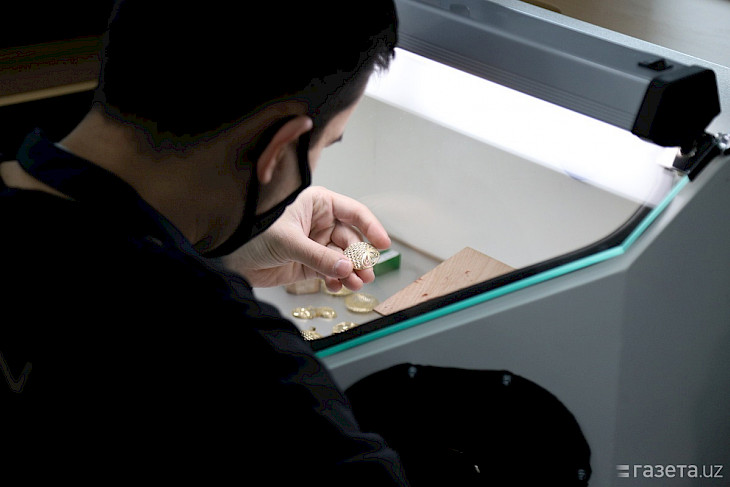Uzbekistan plans to elevate its jewelry industry to an industrial scale and reduce the shadow market by at least 50%, according to a presidential decree issued on June 26. The country aims to increase precious metal processing to 7 tons per year and boost jewelry exports to $300 million, Gazeta.uz reports.
Key Measures
The strategy includes tighter control over production and sales, as well as support for modern, globally competitive design.
Starting July 15, the Fund for Reconstruction and Development will be authorized to provide funding not only to banks but also to leasing companies. These companies will be able to lease jewelry equipment for up to five years at interest rates below the Central Bank's base rate.
The existing provision allowing the Navoi and Almalyk Mining and Metallurgical Combines (NMMC and AMMC) to sell precious metals under direct contracts and installment plans will be extended until 2030. Penalties will no longer apply to delayed shipments under new agreements.
Jewelry production complexes that meet established criteria may receive the status of “Jewelry Centers,” unlocking broader support measures. For such centers, installment payments for precious metals will be interest-free for the first 90 days and will carry a 3% annual interest rate thereafter.
Tackling the Shadow Economy
The shadow turnover in the sector is estimated at $600 million annually. Starting January 1, 2026, the following benefits will be eliminated:
-
VAT exemption on the sale of jewelry;
-
Fees for retail sales of gold jewelry.
Until 2028, VAT will be calculated based on the difference between the final product price and the cost of precious materials, using Tax Committee data.
The sale of precious metals by prospectors and refineries through the commodity exchange will be legalized. All sector participants will become VAT payers regardless of turnover, with 80% of VAT payments refunded from the budget—provided that 80% of their revenue comes from core business operations.
Jewelry Centers will host branches of the Uzbek Jewelry Industry Association (Uzbekzargarsanoati), hallmarking inspections, and diagnostic labs. Association members operating in these centers will pay membership fees at a 50% discount.
Legalizing Production
The Association will assist unregistered jewelers in legalizing their businesses. New registrants will be exempt from membership fees for six months.
Until September 1, 2025, hallmarking authorities will be allowed to stamp imported jewelry without proof of customs duty payment. After that date, such practice will be banned.
From September 1, 2025, individual entrepreneurs will officially be allowed to sell jewelry. Mobile hallmarking units will open in Tashkent, Nukus, and regional centers.
Citizens reporting violations in the handling of precious metals via the Soliq app will receive 50% of the resulting fines.
Customs Duties
Until July 1, 2028, customs duties on imported equipment and materials for the jewelry sector will be waived if no domestic alternatives exist.
From September 1, 2025, to 2028, a 2% customs duty will apply to imported jewelry. Declaration processing will be fixed at one base calculation unit (BCU), regardless of item value. Hallmarking fees will be the same for both domestic and foreign products.
Jewelry imported without proper documentation can be legalized—provided all duties are paid and a customs declaration is filed.
New Oversight Measures
Starting in 2026, a pilot inspection regime will be introduced for the jewelry sector. A first violation will result in a warning. Repeat violations will prompt a field inspection, recorded in the Unified State Control system and coordinated with the business ombudsman.
CentralasianLIGHT.org
July 7, 2025

